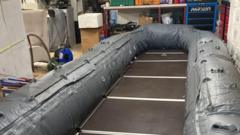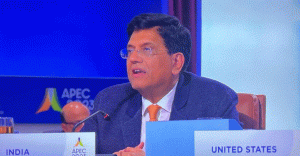
With above-average and record-breaking fall temperatures and dry soil conditions, harvest has progressed rapidly across the state of North Dakota. As harvest begins to conclude for several major crops, attention is being turned to post-harvest field management and fertilizer applications. Although field conditions and weather have been conducive to harvest operations, the warm and dry conditions pose a risk for nitrogen (N) losses if applied in the fall, says Brady Goettl, North Dakota State University Extension soil specialist.
Based on university research, the rule of thumb for fall N application is to wait until the 4-inch depth soil temperature falls below 50 degrees Fahrenheit during the morning hours (6 to 8 a.m.).
These temperatures can be found on the North Dakota Agricultural Weather Network (NDAWN) website at https://ndawn.info/soil.html , or more accurately collected from your field using a simple probe thermometer.
ADVERTISEMENT Soil temperatures below 50 degrees Fahrenheit decrease the risk of nitrification of the fertilizer. If fertilizer is applied above this temperature, microbial processes will begin to transform the ammonia and urea products into nitrate, which is susceptible to leaching or denitrification, reducing overall fertilizer efficiency and economic returns. In some parts of the state, soil temperatures have fallen below the 50-degree Fahrenheit threshold, but only for a short time.
With warm temperatures forecasted for Oct. 17-22, soil temperatures will rise again, increasing the risk for fall N applications. NDSU guidelines recommend delaying fertilizer application based on the product being applied and application method: anhydrous ammonia, banded urea or broadcast urea.
Due to an inherent delay in nitrification of banded ammonia, anhydrous ammonia can be applied soon after soil temperatures fall below 50 degrees Fahrenheit consistently. One week after the threshold soil temperature is reached, applications of banded urea (two inches or deeper) can begin with reduced risk of nitrification. Broadcast urea, given the proper conditions, is rapidly converted to nitrate.
Applications of broadcast urea should be delayed at least two weeks after the 50-degree Fahrenheit soil temperature is reached, says Goettl. The use of nitrification inhibitors is a tool available to farmers to help reduce risk of nitrification and subsequent loss by protecting against delayed soil freezing, which effectively stops N transformations in the soil; however, nitrification inhibitors should not be used to compensate for warm soil temperatures in an attempt to apply fertilizer earlier. Research has shown the most effective nitrification inhibitors are nitrapyrin when applied to anhydrous ammonia and dicyandiamide (DCD) when applied to urea products.
Further, surface-broadcast or shallow incorporated (less than two inches) urea is highly susceptible to ammonia volatilization. Urease inhibitors such as NBPT have been shown to reduce volatilization when applied to surface and shallow-incorporated urea. The NDSU Extension publication Nitrogen Extenders and Additives for Field Crops provides more information at ndsu.
ag/nitrogen . “Delaying the application of N fertilizers later into the fall will be the best and most effective approach for reducing nitrification and nitrate losses,” advises Goettl. “Splitting the application of N between fall and spring/in-season will also help to decrease the risk of N losses and increase fertilizer efficiency.
” Goettl concludes, “Although fall N application is less efficient overall than spring application, following science-based recommendations for fall N application can help maximize efficiency and create an effective tool for spreading out the workload of fertilizer application as compared to applying N entirely in the spring.” ADVERTISEMENT.














